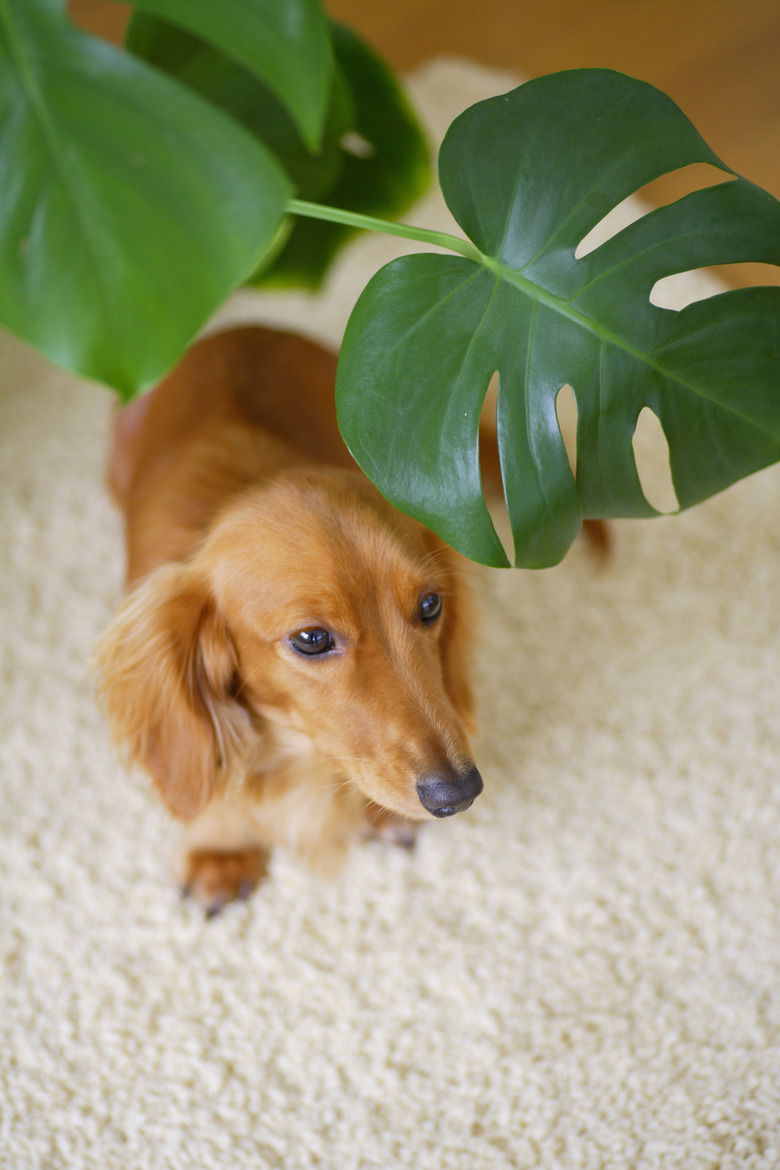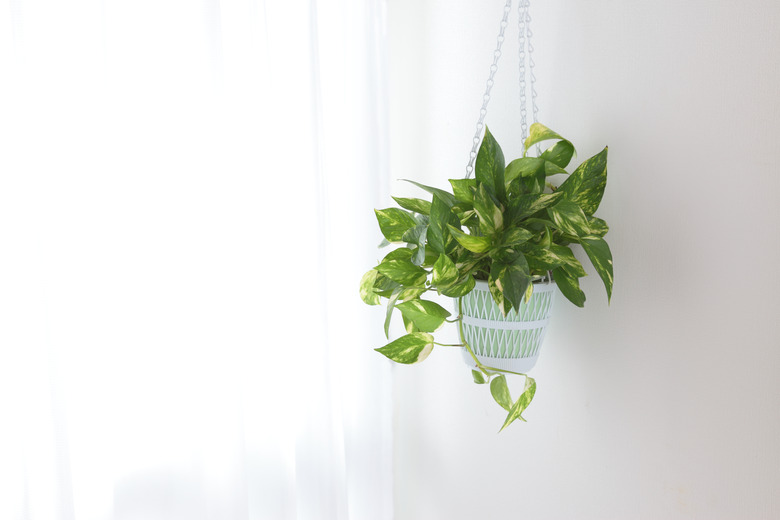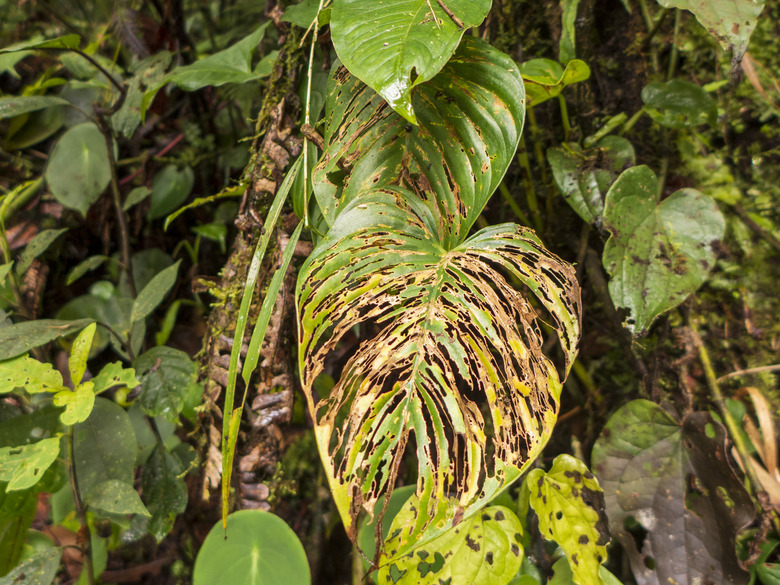Is Philodendron Toxic To Cats?
Nothing can bring a room to life like plants. Rich in textures, colors, and shapes, plants are unlike other decorative focal points since they are growing, ever-changing, living things that require your love and attention to thrive.
But as a pet parent, you should avoid toxic plants that are harmful to dogs and cats. For example, philodendrons, one of the most popular houseplants ever, contain insoluble calcium oxalates, a constituent found in several other common indoor and outdoor plants, including many from the araceae family, such as diffenbachia, peace lily, schefflera, and umbrella plant, among others. Unfortunately, this means that philodendrons are not safe to have around pets.
Common names of philodendrons
Common names of philodendrons
If you're a pet parent and planning to start an indoor garden or are simply adding houseplants to your growing collection, you should know the common names that philodendrons are known by in different markets and nurseries so you can avoid them. The heartleaf philodendron, for instance, is also known by the following names:
- Horsehead philodendron.
- Cordatum
- Fiddle-leaf.
- Panda plant.
- Split-leaf philodendron.
- Lacey-leaf philodendron.
- Swiss cheese plant.
- Fruit salad plant.
- Red emerald.
- Red princess.
- Saddle leaf.
Philodendron pertusum is another philodendron that, like its cousins, contains insoluble calcium oxalates.
How does a philodendron affect my pet?
How does a philodendron affect my pet?
Insoluble calcium oxalates, the dangerous component in philodendrons, are also the component in human kidney stones. Its crystals look like needles and appear on the plant leaves, stems, and other plant parts. When the plant is damaged as in a dog or cat chewing or biting into the plant, the crystals embed themselves in the oral cavity penetrating the tissue and causing pain and swelling of the mouth, tongue, and lips.
In addition to irritation of the mouth, the gastrointestinal tract is affected. Swelling of the upper airway can also occur making it difficult to breathe, but this happens rarely, according to the Pet Poison Helpline.
What are the symptoms of philodendron poisoning?
What are the symptoms of philodendron poisoning?
If your pet has tangled with a philodendron, watch for the following clinical signs caused by the calcium oxalate crystals:
- Hypersalivation
- Abdominal pain.
- Vomiting
- Swelling of the pharynx.
- Difficulty swallowing.
Fortunately, obstruction of the esophagus is rarely an issue.
What should I do if my pet bites into a philodendron?
What should I do if my pet bites into a philodendron?
Call your veterinarian right away if your dog or cat has bitten into any part of the philodendron plant. If you're unable to reach your vet, call your local veterinary emergency hospital, or seek advice from the National Animal Poison Center 1-888-426-4435 or the Pet Poison Helpline 1-855-764-661, where expert help is available 24/7, 365 days a year. Have the name of the philodendron handy, how much may have been ingested, what part of the plant your pet nibbled on, and when it occurred.
Treatment and prognosis
Treatment and prognosis
Veterinary treatment for insoluble calcium oxalate-containing plants like the philodendron involve rinsing the mouth with milk or water. To reduce pain, DVM360, a professional resource for veterinarians, suggests administering calcium-containing products which precipitates soluble oxalates in the oral cavity.
Prognosis is good and the clinical signs usually disappear with 24 hours with no lasting effects.
Other insoluble calcium oxalate-containing plants to avoid
Other insoluble calcium oxalate-containing plants to avoid
As a pet parent, if indoor and/or outdoor gardening is your passion, it's helpful to know which plants are toxic so you can avoid them, or make them completely inaccessible to your pets. You'll find a handy list on the ASPCA Animal Poison Control Center website here.
In addition to the philodendron, here are some other calcium oxalate-containing plants you should avoid if you have pets:
- Dieffenbachia
- Calla lily
- Arrowhead
- Dumbcane
- Peace lily
- Pothos
- Golden pothos.
- Umbrella plant.
- Elephant's ear
- Chinese evergreen
- Schefflera
- Satin pothos
- African evergreen
- Arrow-head vine
- Green gold nephthytis
Soluble calcium oxalates versus insoluble calcium oxalates
Soluble calcium oxalates versus insoluble calcium oxalates
While the treatment for insoluble calcium oxalates-containing plants like philodendrons is straightforward and the symptoms rather quickly resolve, it's a different story for plants containing soluble calcium oxalates, which contain oxalic acid and oxalate salts. If ingested in large enough quantities, plants such as rhubarb (leaves only), star fruit, and the shamrock plant can result in severe poisoning in dogs, cats, and even humans, explains Pet Poison Helpline.
When the soluble calcium oxalates are absorbed from the gastrointestinal tract, they bind with the body's calcium precipitating a sudden drop in calcium. Acute renal failure commonly known as kidney failure is a possibility, though rare.
Conclusion
Conclusion
Philodendrons are popular houseplants that contain insoluble calcium oxalates. Their toxic effect in dogs and cats that bite into the plant is primarily the irritation of the oral cavity. In contrast, soluble calcium oxalates-containing plants like rhubarb leaves can cause severe systemic poisoning.
If your dog or cat has ingested any part of a philodendron, seek veterinary care immediately. With prompt veterinary attention, symptoms resolve within 24 hours.
It's easy to avoid collecting toxic houseplants when you know which plants are toxic and which are not. Always refer to the list at the National Animal Poison Center if in doubt before you add your next plant to your beautiful indoor garden gallery.
Always check with your veterinarian before changing your pet's diet, medication, or physical activity routines. This information is not a substitute for a vet's opinion.


